Demystifying Kubernetes Deployment: Simplifying App Management
 Rohit Deore
Rohit Deore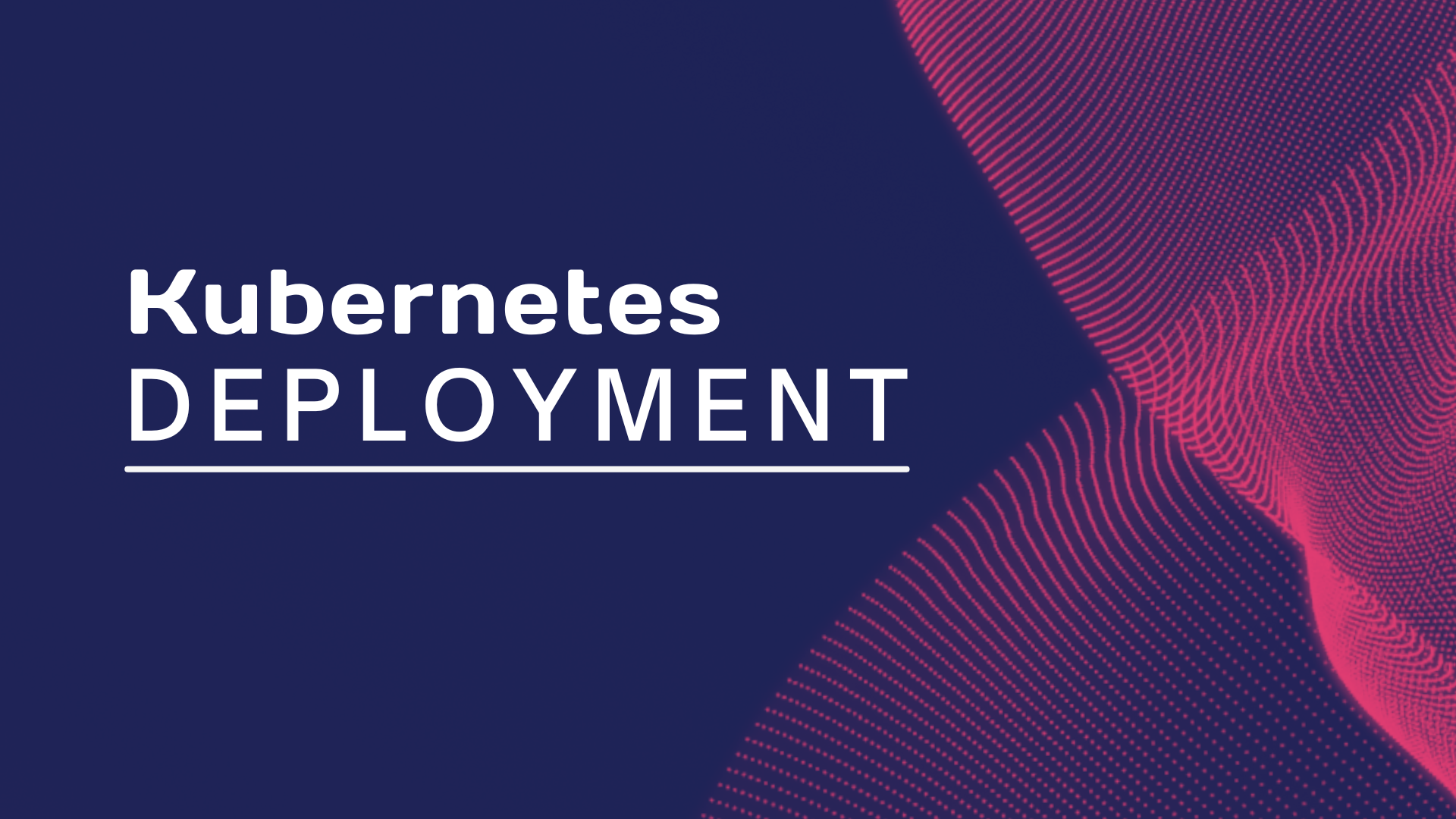
Introduction
Kubernetes, the orchestration platform for containerized applications, offers a powerful tool called Deployment. In this blog post, we'll unravel the concept of Deployment, understand its significance, and walk through the process of deploying a pod application using a Deployment.
Understanding Kubernetes Deployment
What is a Deployment?
A Deployment in Kubernetes is a controller that manages a set of identical pods, ensuring they are available and running. It facilitates easy updates, rollbacks, and scaling of applications.
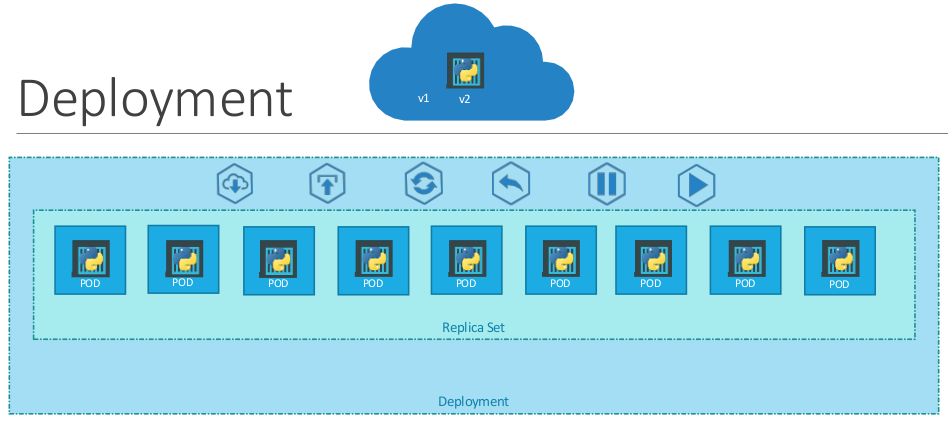
Why do we need Deployments?
Deployments play a crucial role in maintaining the desired state of applications. They offer benefits such as:
High Availability: Ensures a specified number of pods are always available, even if nodes fail.
Simplified Updates: Facilitates seamless application updates and rollbacks.
Efficient Scaling: Allows for easy scaling of applications based on demand.
Deployment Commands: A Quick Overview
👉🏻kubectl create deployment
This command is used to create a new deployment.
👉🏻kubectl get deployments
It provides a list of all deployments in the current namespace.
👉🏻kubectl describe deployment
This command offers detailed information about a specific deployment.
👉🏻kubectl scale deployment
Enables you to scale the number of replicas in a deployment.
👉🏻kubectl rollout
Manages the rollout of a deployment, including updates to the application.
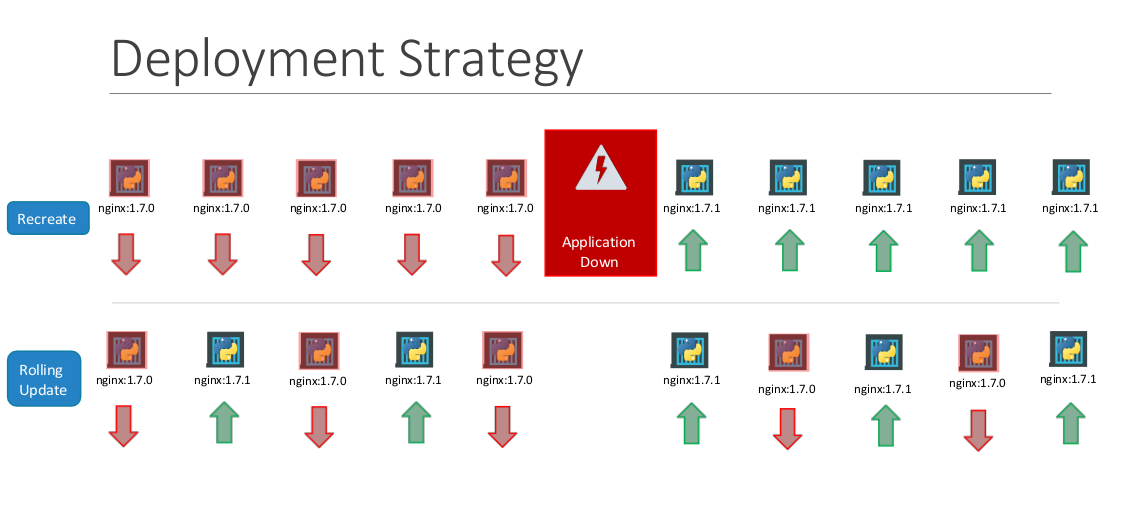
Rolling Updates
Rolling updates allow you to update your application seamlessly, without incurring any downtime. This means that your users can continue using the application even while the update is in progress.
Undo Changes
Sometimes, updates can introduce unexpected issues or errors. Kubernetes allows you to quickly revert to a previous state by undoing changes to a deployment. This means you can restore your application to a known good state, minimizing disruption.
Pause and Resume Changes
During the lifecycle of an application, there might be times when you want to temporarily halt changes to a deployment. This could be for debugging purposes, or to prevent any further updates until a specific issue is resolved.
These features provide powerful tools for managing your applications effectively, ensuring that updates are seamless, and giving you the ability to quickly respond to any unexpected issues. With these capabilities, you can maintain a high level of availability and reliability in your applications.
Deploying a Pod Application using Deployment
Step 1: Creating a Deployment YAML
apiVersion: apps/v1
kind: Deployment
metadata:
name: my-deployment
spec:
replicas: 3
selector:
matchLabels:
app: my-app
template:
metadata:
labels:
app: my-app
spec:
containers:
- name: my-container
image: my-image:latest
Step 2: Applying the Deployment
kubectl apply -f my-deployment.yaml
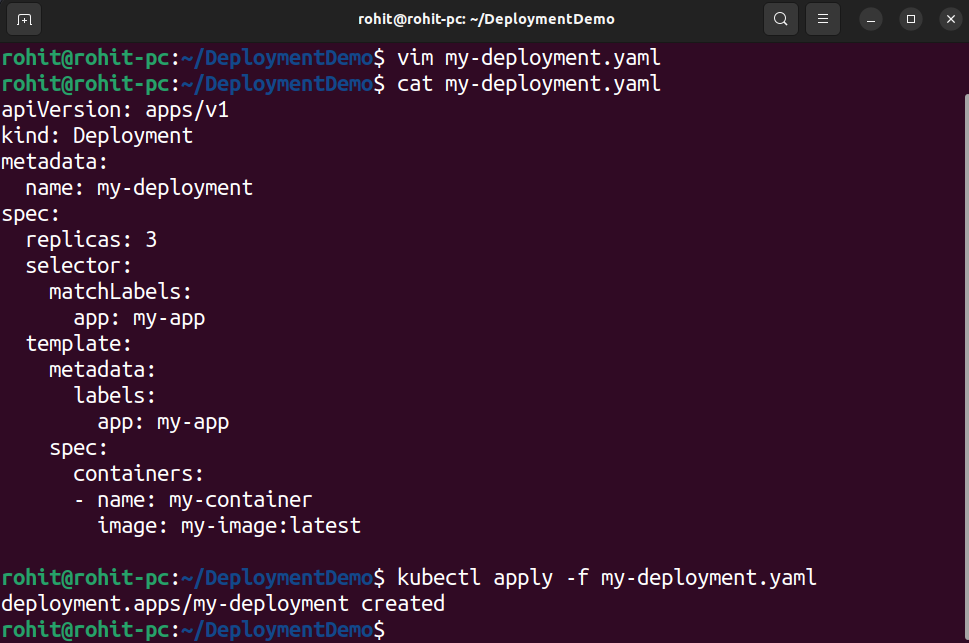
Step 3: Verifying the Deployment
kubectl get deployments
kubectl get pods
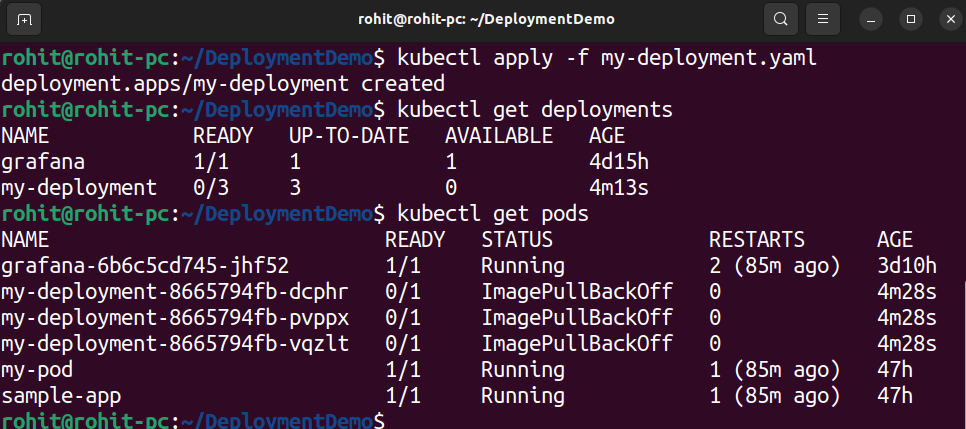
Step 4: Scaling the Deployment
kubectl scale deployment my-deployment --replicas=5

Step 5: Updating the Deployment
Modify the my-deployment.yaml file, then reapply it using the kubectl apply command.
Mastering Kubernetes Deployments makes application management a breeze. Now, you're fully prepared to efficiently handle deployments and ensure seamless application operation.🚀
Learn More:
https://kubernetes.io/docs/concepts/workloads/controllers/deployment/
Thank You!
Keep Exploring...
Subscribe to my newsletter
Read articles from Rohit Deore directly inside your inbox. Subscribe to the newsletter, and don't miss out.
Written by

Rohit Deore
Rohit Deore
Student and Developer